|
BULB LOG 23 --- 7th June 2007
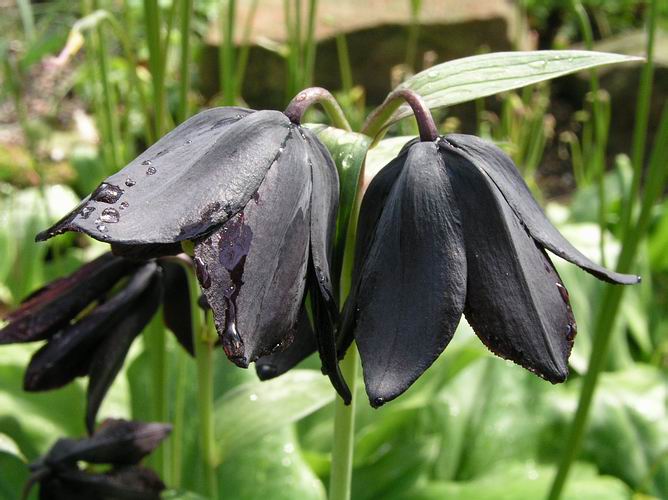
Fritillaria camschatensis Eurasian
I love all fritillaries but Fritillaria camschatensis has to be the one that fascinates me the most. This lovely dark flowered form is from the Eurasian range of this species. It has beautifully sculpted petals each with a deep keel running down the centre and a dentate edge.
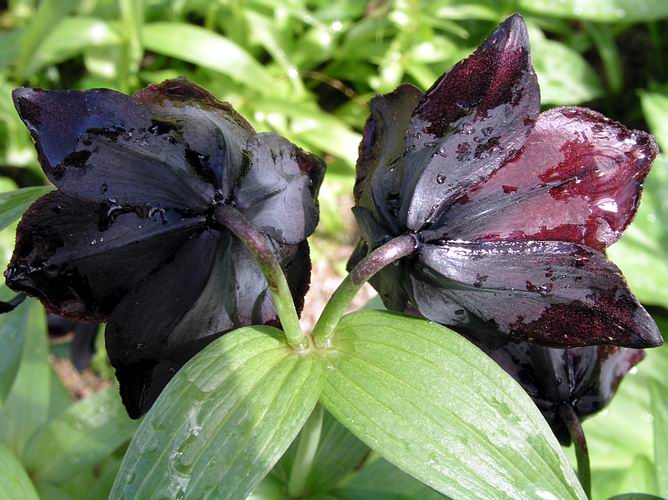
Fritillaria camschatensis from top
When the sun light hits them from the right angle the almost black flowers suddenly reveal an underlying deep burgundy colour which is even more dramatic after a shower of rain as seen here.
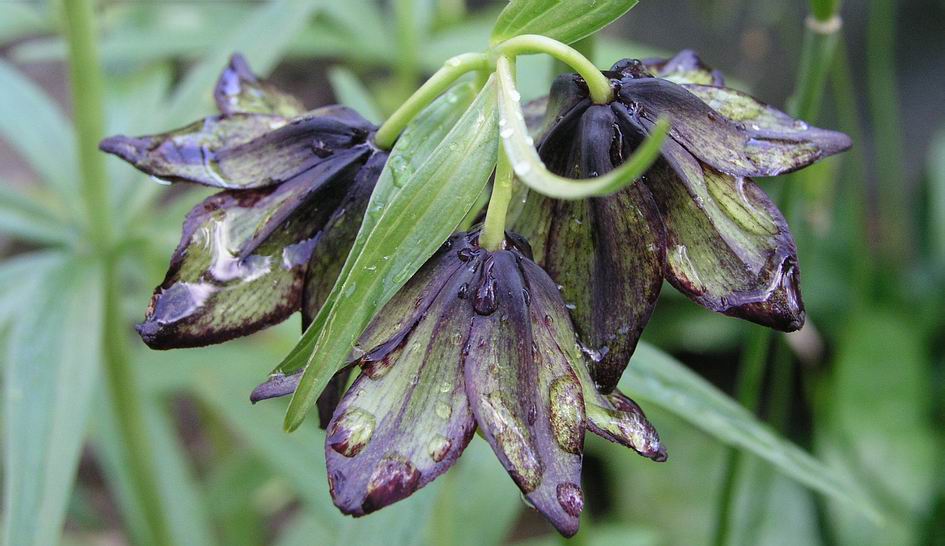
Fritillaria camschatensis Alaskan form
Now the reason I find Fritillaria camschatensis so fascinating is that it is the only species that grows in both North America and Asia. I often speculate as to which way is it travelling: did it evolve in Asia and move to America or was it the other way around ? I have grown the form above from seeds collected in Alaska and the flowers have varying amounts of green as well as a slightly more open shape to the flowers than the Eurasian forms. It is easy to build up a stock of a good clone by removing the lower rice grain type scales of the bulb - I will show that in detail when I repot and can photograph the bubs.
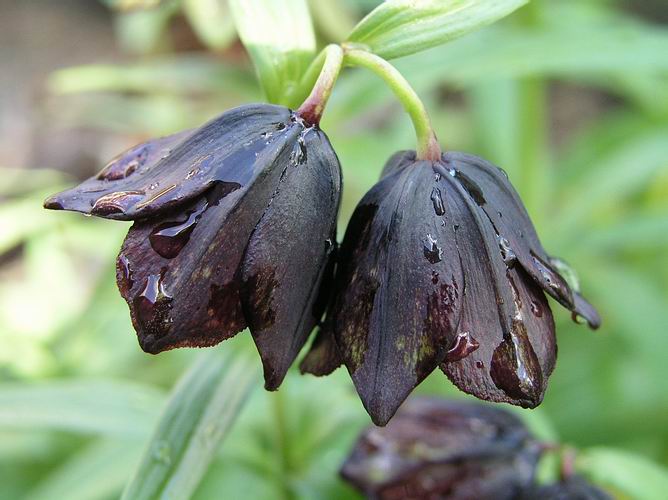
Fritillaria camschatensis Alaskan almost black
One seedling raised from second generation seeds collected from our garden grown plants has flowers that are almost black and a shape that appears to fall somewhere in between the two forms. I am now wondering if this is an extreme form of the Alaskan race or have the two crossed in our garden ?
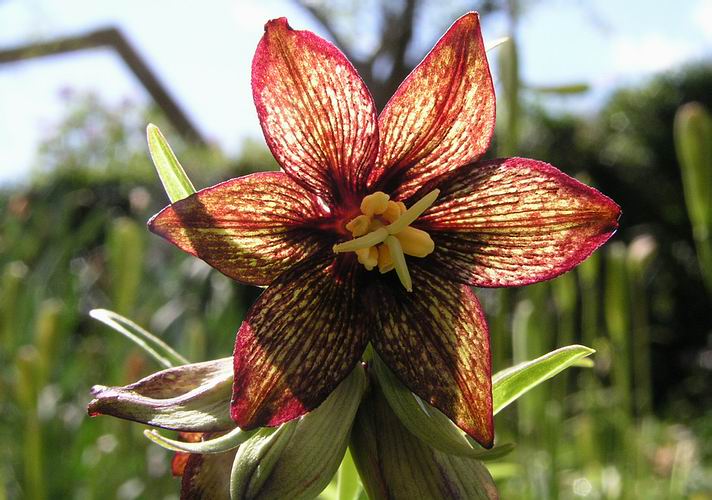
Fritillaria camschatensis landing pad
There is no doubt that the main pollinators that Fritillaria camschatensis has evolved to attract are flies and looking into the open flower with the light behind you can see that it forms an irresistible lure towards the pollen heavy anthers. There are always lots of large bluebottle flies buzzing around when they are in flower in our garden so it is very possible that they are being cross fertilised.
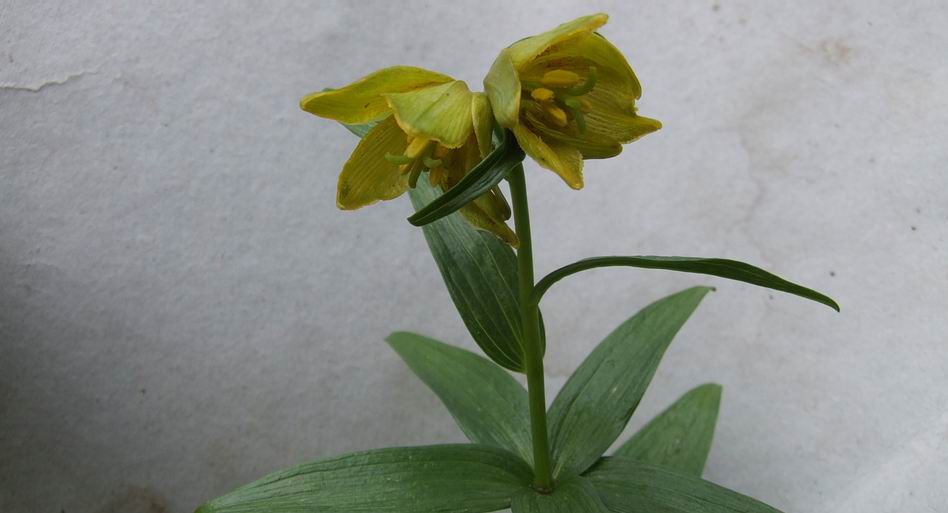
Fritillaria camschatensis yellow form
There are a few yellow forms of Fritillaria camschatensis around, most of which are from the Asian end of the distribution and at least one form is supposed to have come from Japan. Despite being rarer in cultivation and much sought after I do not think the yellow form comes even close to the beauty of the typical plant and I also find many of the yellow forms are weak growing and often diseased.
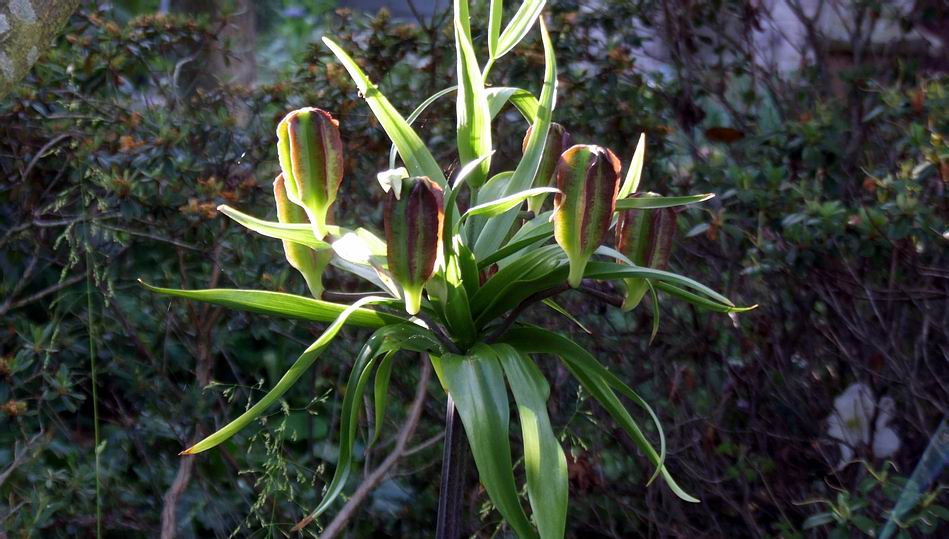
Fritillaria imperialis seed pods
One of the sights that makes me happiest in the garden is that of large ripe seed pods developing on any of the bulbs we grow. Even though there are many forms of Fritillaria imperialis available in the trade I still prefer to raise my own from seed. It is well worth the seven year wait for the seed to grow into flowering sized bulbs and the reward is a large number of healthy bulbs that are more suited to growing in our climate.
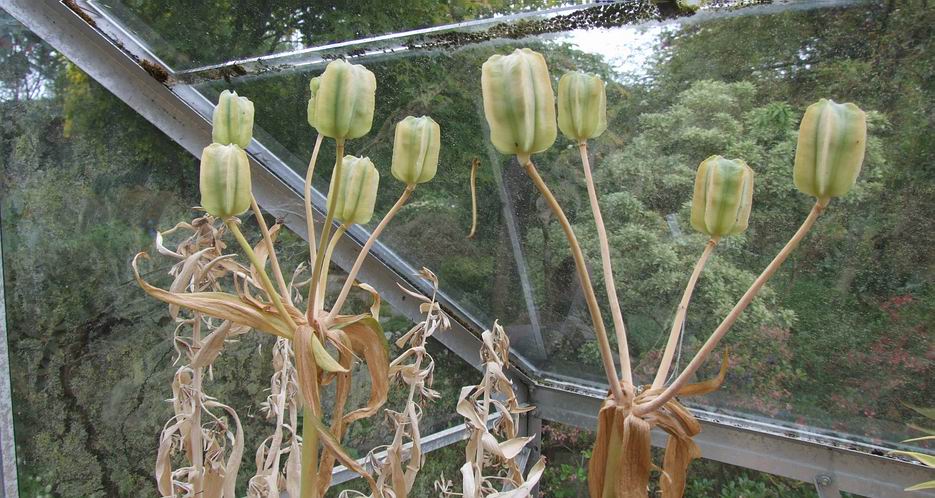
Fritillaria chitralensis seed pods
In the bulb house I have a nice crop of Fritillaria chitralensis seed pods - this is the best seed crop I have ever had from this rare species.
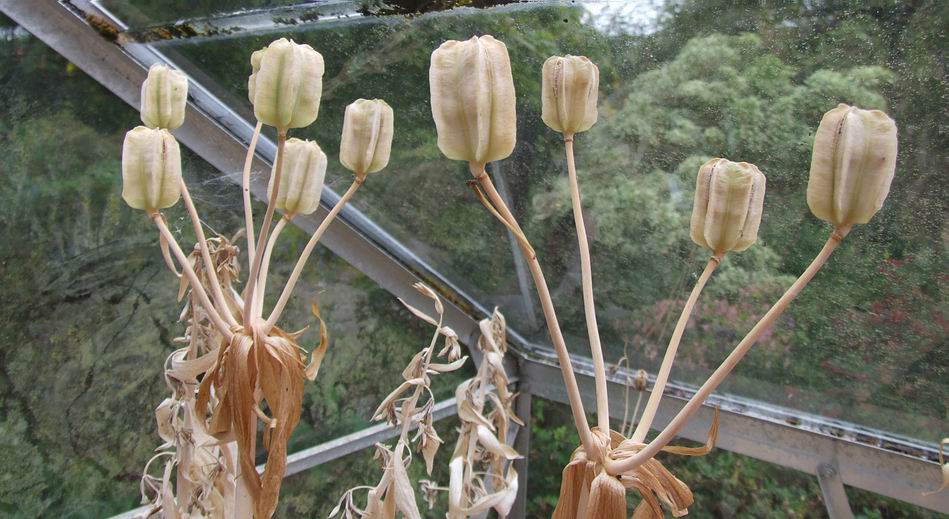
Fritillaria chitralensis seed pods one week on
One week on from the last picture the seedpods are showing the first signs of opening and you can see that the stems have all turned dry and straw coloured - this is a sign that the seed is now fully ripe and could be collected any time. I will leave these pods for a few more days before I collect them. I normally collect the frit seed by cutting off the seed pods with the short stem and place them upside down in a large paper bag which I will store in a dry shed over the summer before I sow it in August/September. As I mentioned last week I no longer store bulb seeds that I intend to sow in the autumn in a fridge over the summer as I now think this inhibits their development.
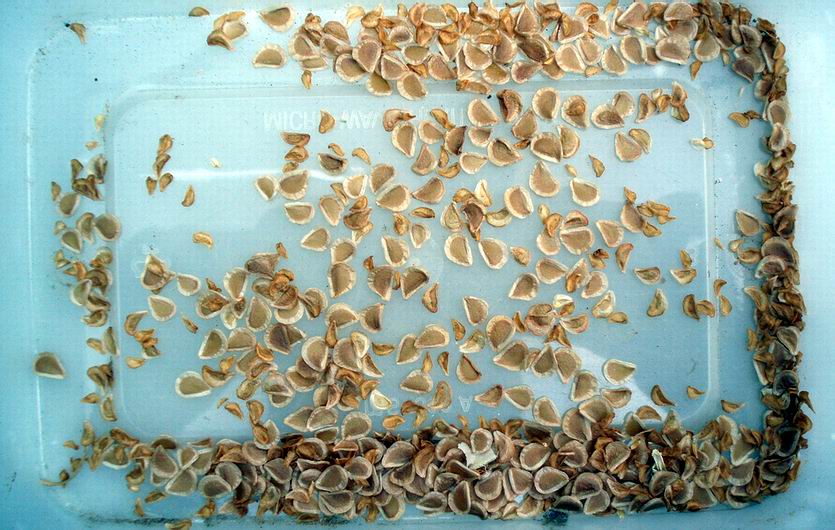
Fritillaria seed
Sometimes I do remove the seed from the dry capsule immediately and then store it in smaller paper seed packets but before I packet it I like to clean it. Look carefully at the seed in this plastic box and you will see a lot of small unfertile seed as well as the nice fertile seeds.
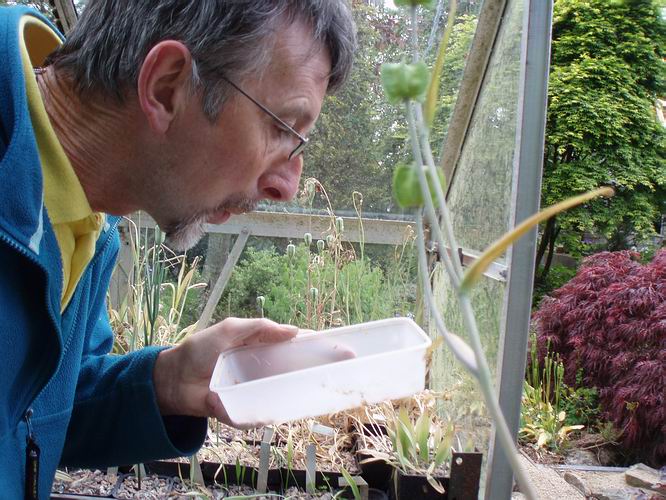
Blowing fritillaria seeds
To remove these unfertile seeds and other bits of chaff I lightly blow into the box regulating the strength of my breath just enough to cause the lighter materials to fly away but not enough to lose the good seeds - shaking the box gently to and fro at the same time helps the process. Not so easy while holding a camera in the other hand.
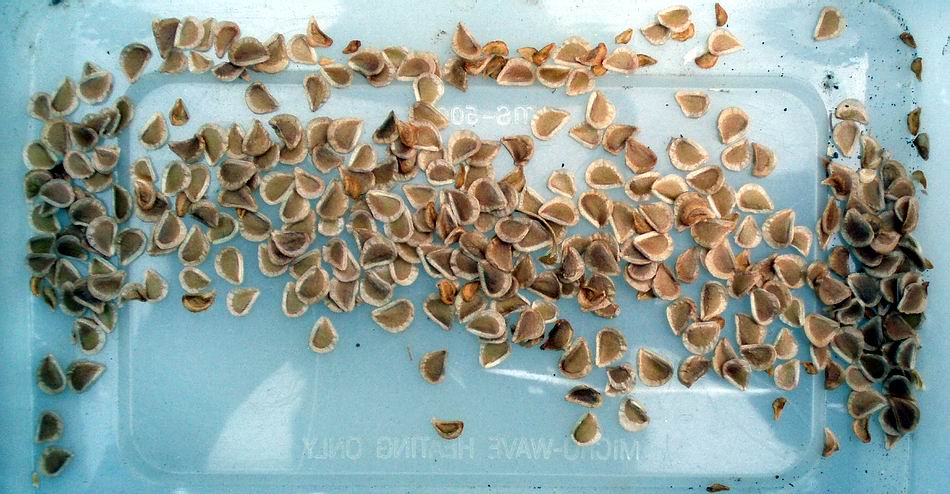
Clean fritillaria seeds
After a short time I am left with a nice clean crop of healthy seeds to place in a paper packet.
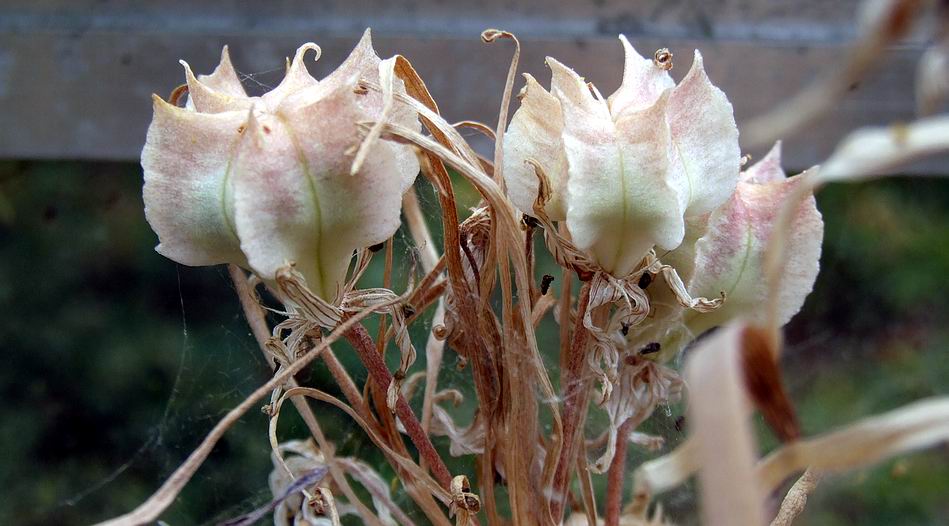
Fritillaria stenanthera seed pods
Despite the warm sunny April we had this year it has been a disappointing season for seed and it is mostly the early flowering Fritillaria like this stenanthera that have set seed.
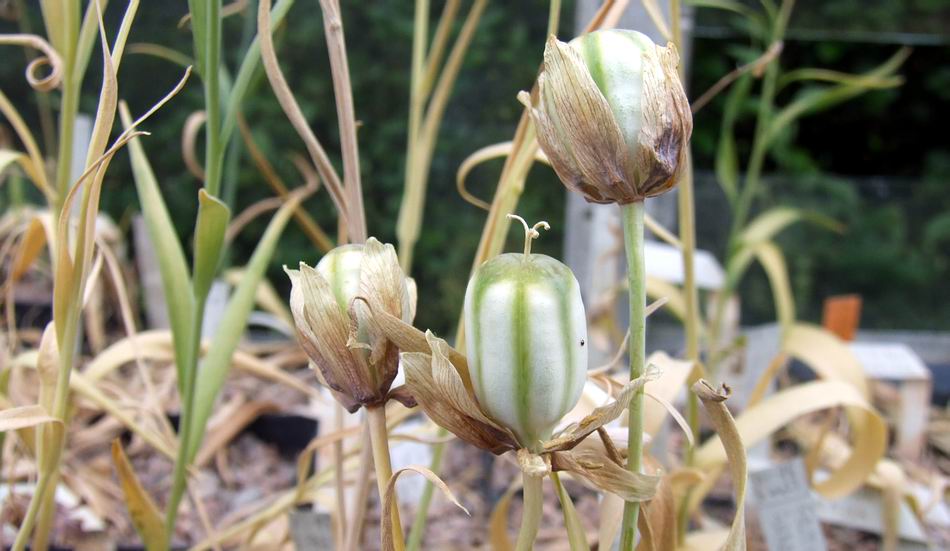
Fritillaria michailovskyi seed pods
Fritillaria michailovskyi seed pods are always easy to identify as the old dried petals remain attached while the petals of most other frits fall away as the flowers fade.
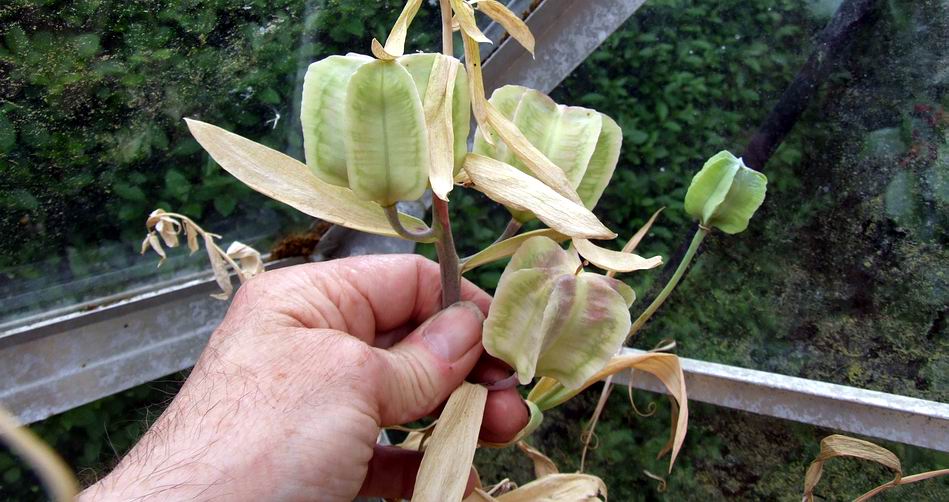
Fritillaria sewerzowii seed pods
Fritillaria sewerzowii has some of the largest seed pods of all the frits especially when you compare them to the size of the flowers.
^ back to the top ^
|

